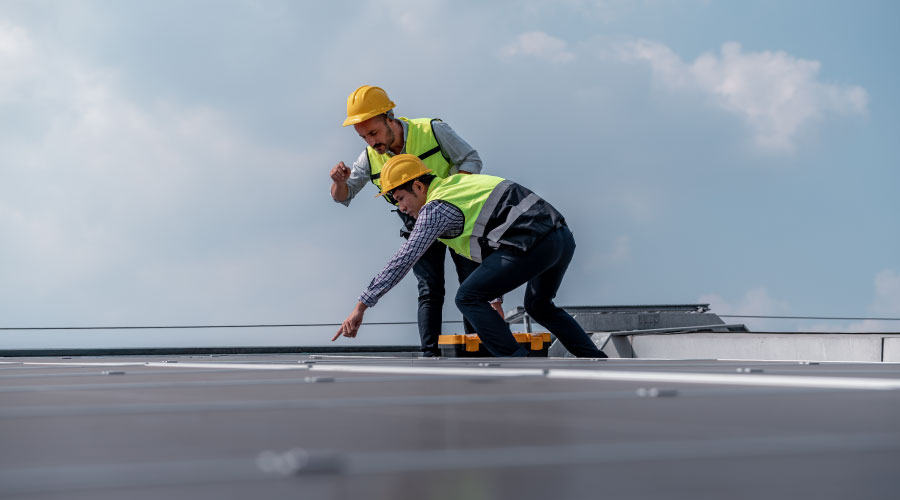Spring, Fall Best Times for Roofing Maintenance
The roofing industry recommends that workers perform maintenance in spring and fall, as well as after major weather events, such as high winds and snowstorms with freezing rain. Routine roof maintenance primarily involves visual inspection of the roof system and rooftop PV system. Roofing professionals who are familiar with the roof type can determine if components need repairs. A typical visual inspection includes walking the roof perimeter to inspect the edge detail, whether it is a parapet or a flat edge, and walking the roof field to inspect each penetration.
A comprehensive roof inspection also can reveal soft spots, which indicate deterioration and likely require more investigation and repair. The additional investigation might involve destructive testing — making an opening for closer inspection — or non-destructive analysis, such as infrared scanning.
Roofing professionals should perform routine maintenance and repairs to membranes and systems, and it is important to have an authorized roofing contractor perform maintenance and repairs to a system that is under warranty. In-house personnel can perform basic roof maintenance, such as clearing debris from drains and ensuring the rooftop does not collect refuse or infrequently used materials and equipment.
While it is essential for managers to know about the roof-membrane type, knowing the makeup of the system is just as important. For example, if a system includes an air barrier or vapor retarder, then maintenance and repair of the system, no matter how localized, needs to include all system components, and they need to be appropriately tied-in. Managers can help contractors provide more effective service by knowing and providing this type of information.
When it comes to maintenance of PV systems, non-roofing experts can unintentionally do damage to roof systems by dropping tools or continually walking the same path, especially around the perimeter of the PV system. Installing walk pads is an inexpensive solution to roof membrane abrasion from foot traffic.
Maintenance of rooftop PV systems is similar to roof-system inspections in that visual inspection is a necessary first step for long-term performance. A visual inspection of a PV array ensures it is structurally sound. Maintenance of the array, including the panels and racking, should involve the visual inspection of panels, mid-panel clips, end clips, wiring, and racking. Inspectors also should check the undersides of panels to ensure animals have not disrupted wires by building nests or chewing on them.
A visual inspection of PV panels also can reveal whether workers need to remove dust and other debris, such as leaves and bird droppings, from the top surface. Keeping the panels' top surfaces clean allows the most sunlight to reach them, creating the most energy possible.
Related Topics:














